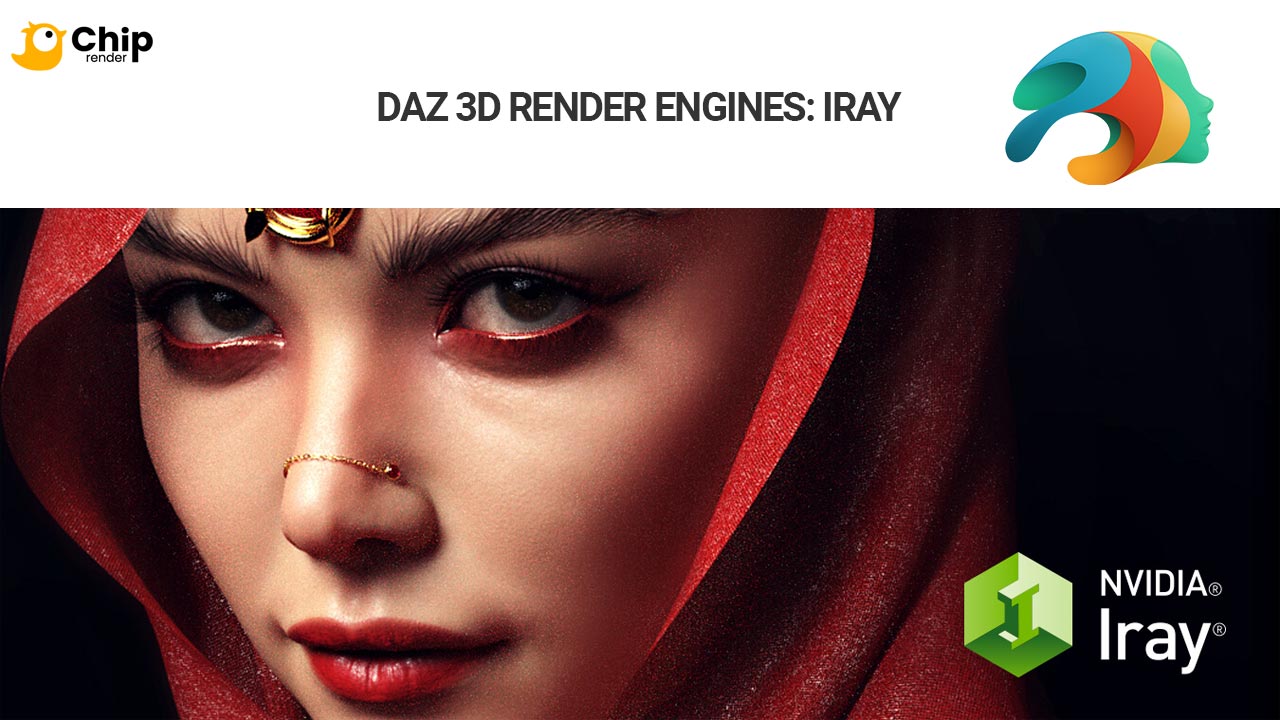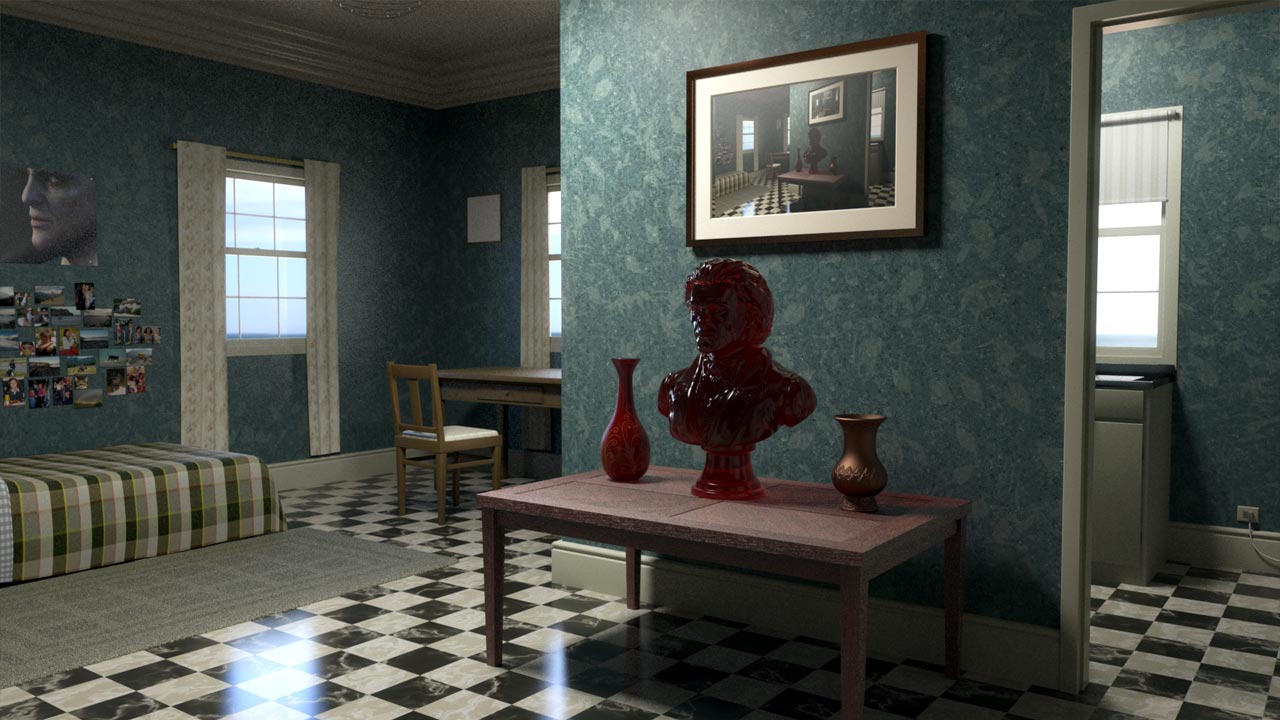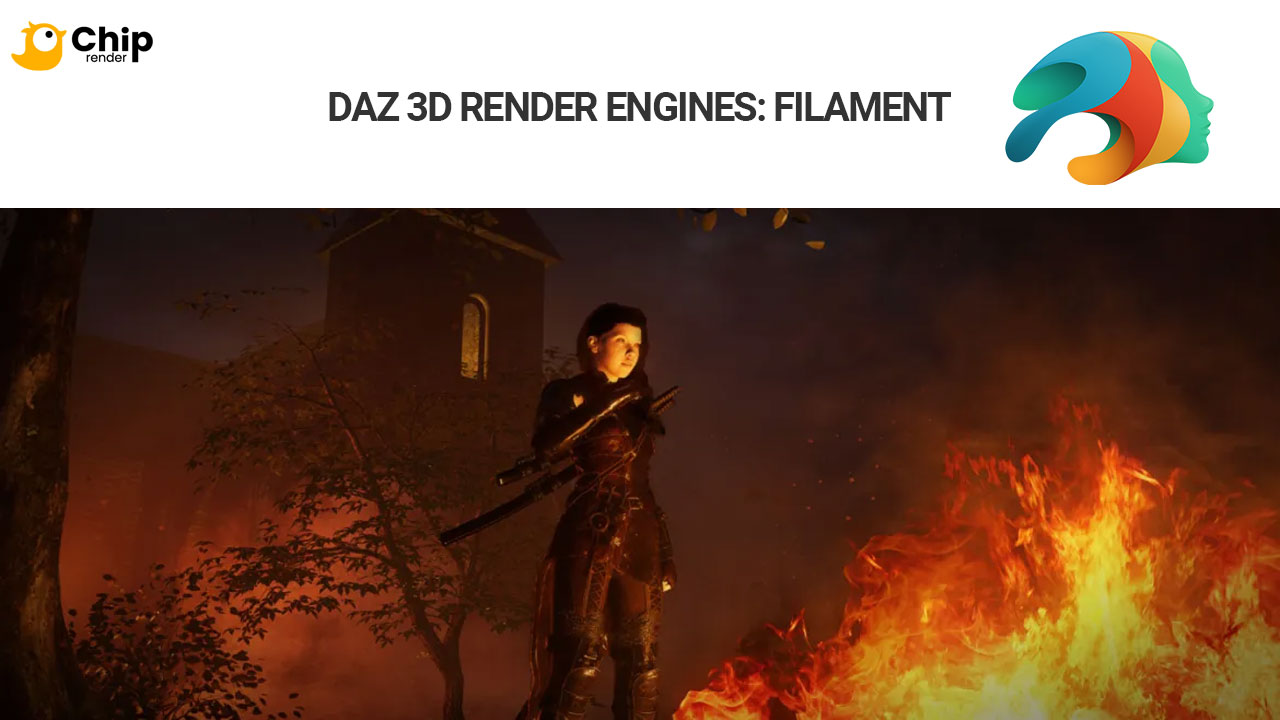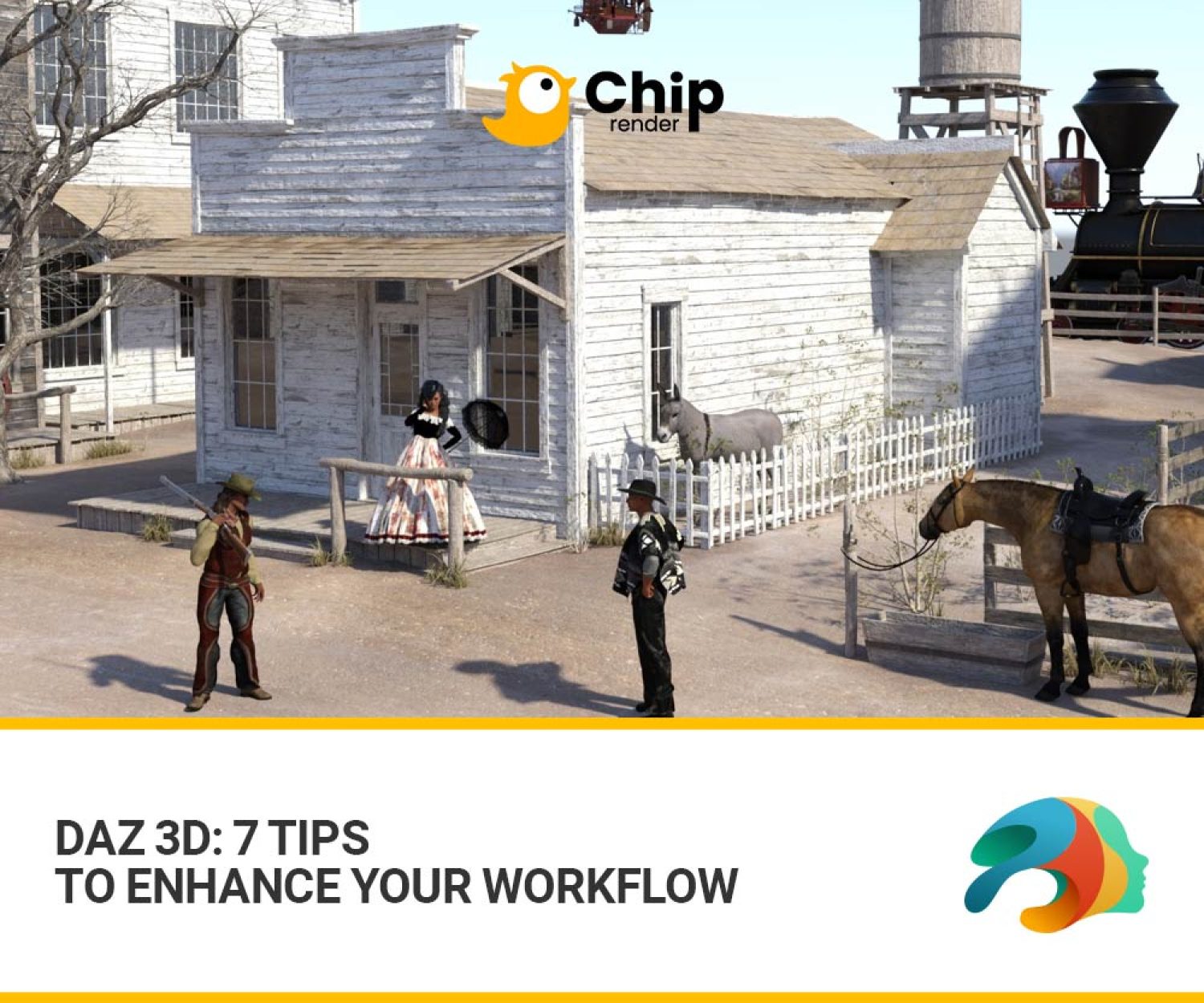Compare three Daz 3D Render Engines: Iray vs 3Delight vs Filament.
Daz Studio is a free and powerful 3D creation application. It enables you to produce gorgeous 3D art quickly and easily. Whether you have just started or have been an experienced 3D artist or animator, you can learn quickly and start creating high-quality 3D scenes. This is thanks to Daz 3D’s intuitive user interface and step-by-step interactive tutorials.
And you cannot get beautiful renders without Daz 3D Render Engines. There are some render engines available in Daz Studio, each with distinct benefits. In this post, Chip Render will take a look at the difference between Iray vs 3Delight vs Filament in Daz Studio.
Daz 3D Render Engines: Iray Renderer
Iray is a GPU-based unbiased render engine. It supports Physically Based Rendering (PBR) maps, allowing for more realistic renders by applying real-world principles to the rendering process.
Most assets have both an RSL shader and a PBR shader, making them compatible with both Iray and 3Delight. When working with such an asset, you can choose MDL for rendering with Iray and RSL for rendering with 3Delight.
When selecting your render engine, navigate to the Render Setting tab and locate the Engine dropdown at the top of your settings. Choose the desired engine, then click the blue Render button or press CTRL+R to start rendering your scene.
We will cover a comprehensive Iray render settings guide for Daz Studio in a later post.

Image via Daz 3D
Daz 3D Render Engines: 3Delight
3Delight is a CPU-based biased render engine, working following the RenderMan standard. The renderer tends to offer a distinctive, somewhat cartoonish appearance. This is due to its method of simulating 3D objects, which does not align with Physically Based Rendering (PBR).
Unlike many other render engines, 3Delight stands apart with its unique approach. It leans toward the older-style render engines and adopts a different method for surface description. It uses CPUs for rendering; this means even without GPUs needed for rendering Iray, Daz users can still render within Daz Studio using 3Delight.
Similar to Iray, 3Delight is designed for final renders rather than previews. So you would not typically use it for previews. However, you can still do so if you want – preview both 3Delight and Iray renders in your viewport.

Image by Sven Dullah, via Daz 3D Forum
Daz 3D Render Engines: Filament
Filament, similar to Iray, is a PBR engine, making it physically-based and unbiased. It excels in speed, rendering significantly faster than Iray, although it may sacrifice a bit of accuracy in comparison.
Unlike 3Delight and Iray, which are mainly used for final renders, Filament serves as a tool for near-real-time scene previews within Daz Studio. This renderer is useful for viewing the changes in your scenes almost immediately whenever you tweak your settings, without having to wait for lengthy rendering times.

Image via Daz 3D
Daz 3D Render Engines: Iray vs 3Delight vs Filament
To sum up, among various Daz 3D Render Engines, Iray and 3Delight are the main render engines included in Daz Studio at the moment.
- Iray is the default render engine in Daz Studio. It is a physically-based render that excels at producing photorealistic visuals. The majority of content released nowadays uses only Iray assets. One of the major disadvantages of Iray is that it requires a modern Nvidia GPU with plenty of VRAM to render quickly. Otherwise, it will render using the CPU, which is far slower.
- 3Delight is a biased render engine. Therefore, you can accomplish things with it that you cannot do with Iray. For instance, you can render lights that do not cast shadows with 3Delight. This kind of light is not possible with real lights and so will not function with Iray. At the moment, 3Delight makes non-photorealistic visuals easier than Iray. Unfortunately, many sellers no longer support it, thus using it requires you to change materials yourself. In addition, the 3Delight version provided with Daz Studio has not been updated in years.
- Filament is a new render engine that Daz has begun to include in Daz Studio since version 4.14. It is an open source physically-based render engine. The renderer is really fast – almost real-time and works pretty well on older systems too. In Daz Studio, Filament is mainly used as a viewport drawstyle for near-real-time preview, though it can also be used to render. However, it is currently only available in the Windows edition of Daz Studio and has restricted features.
In addition, there are other options besides the default Daz 3D render engines. You can also use the Octane Render plugin or Daz Bridges for other programs such as Unreal Engine and Unity.
 Chip Render Farm is one of the few cloud rendering services that support Daz 3D – Daz Studio. With our powerful IaaS model and 1/2/4 x GPU RTX 3090 servers, you will be able to speed up your Daz projects several times. Join Chip Render now and have your own Cloud Workstation from only $2.9.
Chip Render Farm is one of the few cloud rendering services that support Daz 3D – Daz Studio. With our powerful IaaS model and 1/2/4 x GPU RTX 3090 servers, you will be able to speed up your Daz projects several times. Join Chip Render now and have your own Cloud Workstation from only $2.9.




